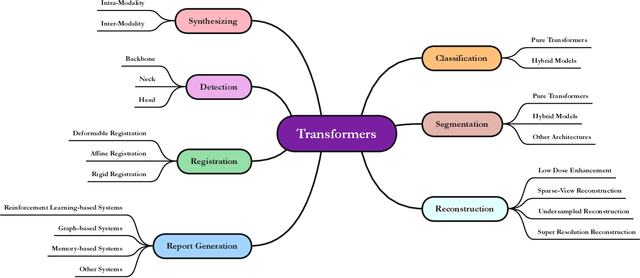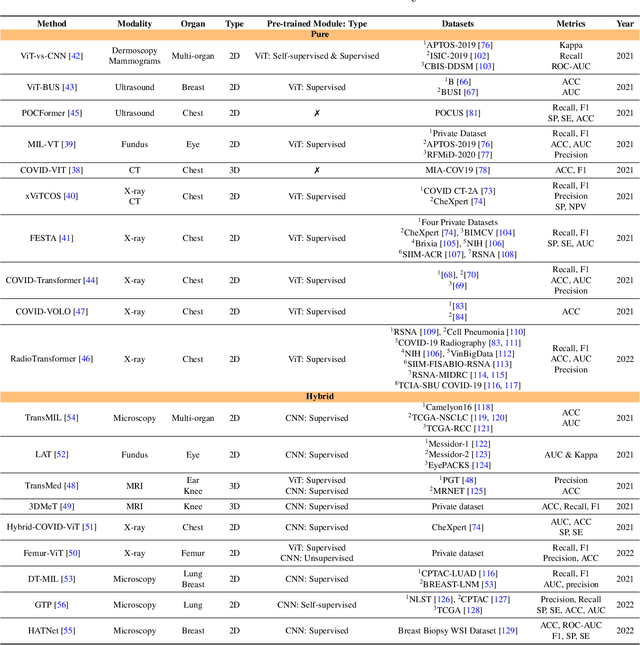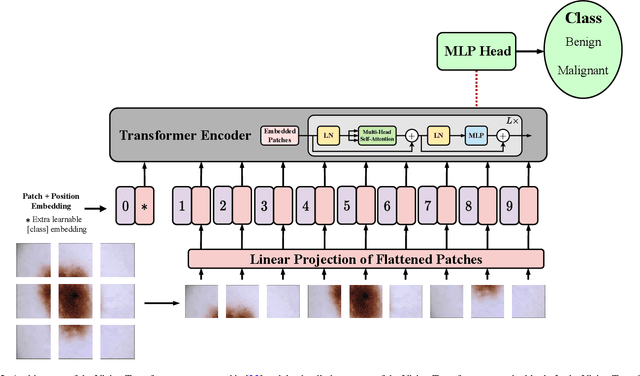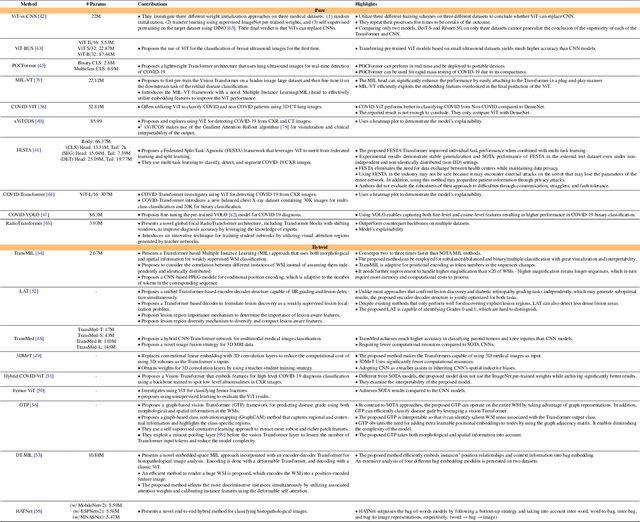Yiwei Jia
Enhancing Medical Image Segmentation with TransCeption: A Multi-Scale Feature Fusion Approach
Jan 25, 2023Abstract:While CNN-based methods have been the cornerstone of medical image segmentation due to their promising performance and robustness, they suffer from limitations in capturing long-range dependencies. Transformer-based approaches are currently prevailing since they enlarge the reception field to model global contextual correlation. To further extract rich representations, some extensions of the U-Net employ multi-scale feature extraction and fusion modules and obtain improved performance. Inspired by this idea, we propose TransCeption for medical image segmentation, a pure transformer-based U-shape network featured by incorporating the inception-like module into the encoder and adopting a contextual bridge for better feature fusion. The design proposed in this work is based on three core principles: (1) The patch merging module in the encoder is redesigned with ResInception Patch Merging (RIPM). Multi-branch transformer (MB transformer) adopts the same number of branches as the outputs of RIPM. Combining the two modules enables the model to capture a multi-scale representation within a single stage. (2) We construct an Intra-stage Feature Fusion (IFF) module following the MB transformer to enhance the aggregation of feature maps from all the branches and particularly focus on the interaction between the different channels of all the scales. (3) In contrast to a bridge that only contains token-wise self-attention, we propose a Dual Transformer Bridge that also includes channel-wise self-attention to exploit correlations between scales at different stages from a dual perspective. Extensive experiments on multi-organ and skin lesion segmentation tasks present the superior performance of TransCeption compared to previous work. The code is publicly available at \url{https://github.com/mindflow-institue/TransCeption}.
Advances in Medical Image Analysis with Vision Transformers: A Comprehensive Review
Jan 10, 2023



Abstract:The remarkable performance of the Transformer architecture in natural language processing has recently also triggered broad interest in Computer Vision. Among other merits, Transformers are witnessed as capable of learning long-range dependencies and spatial correlations, which is a clear advantage over convolutional neural networks (CNNs), which have been the de facto standard in Computer Vision problems so far. Thus, Transformers have become an integral part of modern medical image analysis. In this review, we provide an encyclopedic review of the applications of Transformers in medical imaging. Specifically, we present a systematic and thorough review of relevant recent Transformer literature for different medical image analysis tasks, including classification, segmentation, detection, registration, synthesis, and clinical report generation. For each of these applications, we investigate the novelty, strengths and weaknesses of the different proposed strategies and develop taxonomies highlighting key properties and contributions. Further, if applicable, we outline current benchmarks on different datasets. Finally, we summarize key challenges and discuss different future research directions. In addition, we have provided cited papers with their corresponding implementations in https://github.com/mindflow-institue/Awesome-Transformer.
Medical Image Segmentation Review: The success of U-Net
Nov 27, 2022Abstract:Automatic medical image segmentation is a crucial topic in the medical domain and successively a critical counterpart in the computer-aided diagnosis paradigm. U-Net is the most widespread image segmentation architecture due to its flexibility, optimized modular design, and success in all medical image modalities. Over the years, the U-Net model achieved tremendous attention from academic and industrial researchers. Several extensions of this network have been proposed to address the scale and complexity created by medical tasks. Addressing the deficiency of the naive U-Net model is the foremost step for vendors to utilize the proper U-Net variant model for their business. Having a compendium of different variants in one place makes it easier for builders to identify the relevant research. Also, for ML researchers it will help them understand the challenges of the biological tasks that challenge the model. To address this, we discuss the practical aspects of the U-Net model and suggest a taxonomy to categorize each network variant. Moreover, to measure the performance of these strategies in a clinical application, we propose fair evaluations of some unique and famous designs on well-known datasets. We provide a comprehensive implementation library with trained models for future research. In addition, for ease of future studies, we created an online list of U-Net papers with their possible official implementation. All information is gathered in https://github.com/NITR098/Awesome-U-Net repository.
 Add to Chrome
Add to Chrome Add to Firefox
Add to Firefox Add to Edge
Add to Edge